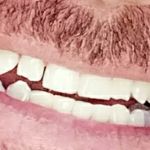Recognizing and Treating Signs of Gum Disease: How to Prevent and Manage It
Trending Blog Articles
Popular Dental Blog Posts
 How to Clean Dental Prosthetics – Complete Care and Maintenance Guide
How to Clean Dental Prosthetics – Complete Care and Maintenance GuideDiscover how to clean dental prosthetics effectively with professional techniques and home care methods. Keep your dentures fresh and long-lasting with tips from Family Dentistry Online.
 The Importance of Early Dental Checkups for Your Child's Oral Health
The Importance of Early Dental Checkups for Your Child's Oral HealthDiscover the importance of early dental checkups for children. Learn why starting dental visits early can prevent problems and ensure your child’s long-term oral health.
 How to Prevent Tooth Loss: Effective Tips for Oral Health
How to Prevent Tooth Loss: Effective Tips for Oral HealthLearn how to prevent tooth loss effectively with expert tips on oral care, preventing gum disease, and maintaining healthy teeth. Discover the best strategies for keeping your teeth strong and healthy.
 Best Foods to Avoid Tooth Decay – Tips for a Healthier Smile
Best Foods to Avoid Tooth Decay – Tips for a Healthier SmileLearn about the best foods to avoid tooth decay and how you can protect your teeth with a healthy diet. Find out which foods help prevent tooth decay and improve your dental health.
 Best Dental Care Tips for Seniors with Dentures and Implants
Best Dental Care Tips for Seniors with Dentures and ImplantsExplore the best dental care tips for seniors with dentures and implants, including daily routines, comfort solutions, and real patient stories. Learn expert guidance and find trusted support through Family Dentistry Online.
 How to Care for Dental Bridges After Surgery and Recovery Tips
How to Care for Dental Bridges After Surgery and Recovery TipsLearn how to care for dental bridges after surgery with effective recovery tips and expert aftercare guidance from Family Dentistry Online. Keep your smile strong and healthy.
Categories
Popular Dental Clinics
 Pearl River Family Dentistry5.0 (104 review)
Pearl River Family Dentistry5.0 (104 review) North Shore Smiles Pediatric Dentistry5.0 (52 review)
North Shore Smiles Pediatric Dentistry5.0 (52 review) Corona Family Dental Group3.0 (42 review)
Corona Family Dental Group3.0 (42 review) Periodontics Limited - Henderson5.0 (305 review)
Periodontics Limited - Henderson5.0 (305 review) Bryn Mawr Dental Associates4.0 (493 review)
Bryn Mawr Dental Associates4.0 (493 review) Greenberg Dental & Orthodontics4.0 (1278 review)
Greenberg Dental & Orthodontics4.0 (1278 review) Top Dental Blog Posts
Most Searched Dental Clinics
Hot Blog Topics
 The Importance of Oral Health Education During Pregnancy for a Healthy Pregnancy
The Importance of Oral Health Education During Pregnancy for a Healthy Pregnancy Best Tips for Brushing Your Teeth Properly for Healthy Gums: Essential Techniques for Oral Health
Best Tips for Brushing Your Teeth Properly for Healthy Gums: Essential Techniques for Oral Health Why Skipping Dental Checkups Can Lead to Bigger Oral Health Problems
Why Skipping Dental Checkups Can Lead to Bigger Oral Health Problems Advantages of Porcelain Dental Restorations
Advantages of Porcelain Dental Restorations How Can Diabetes Cause Tooth and Gum Problems? Preventing and Managing Oral Health Issues
How Can Diabetes Cause Tooth and Gum Problems? Preventing and Managing Oral Health Issues Healthy Habits for Promoting Good Oral Health and Hygiene: Tips for a Healthy Smile
Healthy Habits for Promoting Good Oral Health and Hygiene: Tips for a Healthy Smile 